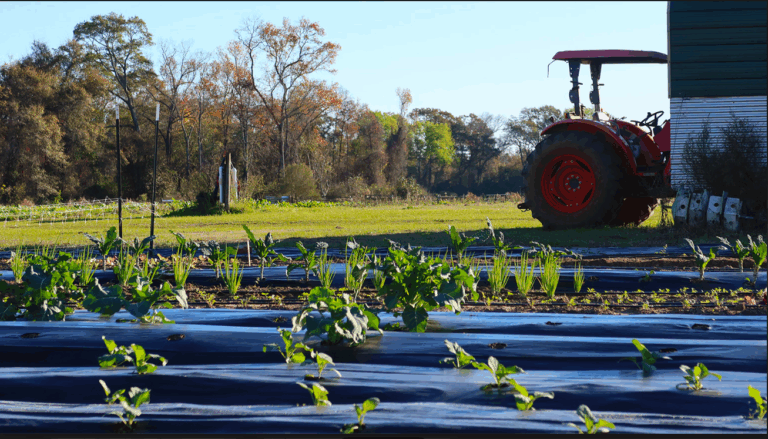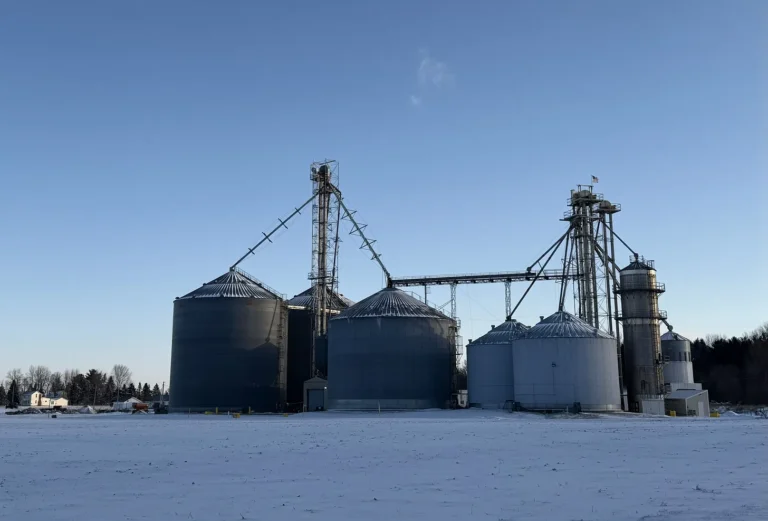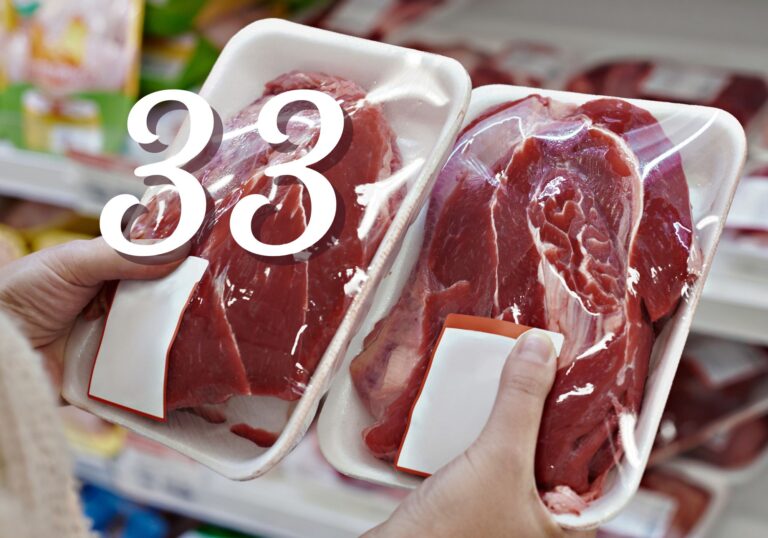Breaking the chains on small farms: Five reforms to stop Big Ag overreach
A Door to Freedom Coalition white paper outlines five urgent reforms for USDA, HHS, and EPA — from stopping mandatory electronic ear tags to closing pesticide loopholes — to support rural prosperity and protect public health.
Revoking and Clarifying Rules to Help Small Farms and Ranches and Improve Rural Prosperity
Door to Freedom Coalition Meryl Nass, M.D., President
Livestock & Meat: 3 Items for USDA
1. Livestock ID: Rule mandating electronic ear tagging of cattle and bison moving interstate
Agency: USDA-APHIS
Summary: The previous rule, adopted in 2013, allowed farmers and ranchers to choose from a range of low-tech and high-tech options for identifying their cattle and bison when crossing state lines. The 2024 rule provides that the only form of allowed “official identification” are ear tags that are both visually and electronically readable.
Problem: The USDA claims authority for the rule under the Animal Health Protection Act, which was passed to help prevent, detect, control, and eradicate animal diseases and pests. Yet nothing in that statute directs USDA to establish identification requirements that aren’t tied to animal disease control measures. Furthermore, the statute certainly doesn’t authorize the agency to mandate electronic tagging completely unconnected to any disease control program. USDA is relying on the overturned Chevron deference to agencies to require unnecessary, expensive tags for cattle and bison owners across the country.
Action: Revoke 2024 rule mandating that “official identification” be both visually and electronically readable. Allow farmers to choose their own preferred form of ID.
Regulation & Rule Notation: 9 C.F.R. Parts 71, 77, and 78 [Docket No.
APHIS–2009–0091] RIN 0579–AD24
Supporting SCOTUS Case: Loper Bright Enterprises v. Raimondo, 603 U.S. 369 (2024)
2. Redundant Rules for USDA Cooperative Interstate Shipping (CIS) Program Interfere with Small Farmer Meat Sales
Agency: USDA-FSIS
Summary: Despite insufficient USDA-inspected slaughterhouses and meat processing facilities, a program that could ameliorate some of this logjam is not widely used due to redundant, excessive requirements.
The Federal Meat Inspection Act (FMIA) of 1967 authorized USDA to enter into cooperative agreements with state agencies to create state meat inspection programs (MIPs) so long as they are “at least equal to those under subchapter I of [21 USC Ch. 12: Meat Inspection].” Title 9 of the CFR governs FSIS inspection requirements, and was authorized by FMIA (21 USC Ch. 12).
The Cooperative Interstate Inspection (CIS) Program, authorized by 21 USC § 683 (2008 Farm Bill), gives USDA the authority to select eligible state-inspected facilities that meet certain requirements, where “eligible” is defined as “an establishment that is in compliance with— (A) the State inspection program of the State in which the establishment is located; and (B) this chapter, including rules and regulations issued under this chapter.” In other words, with regards to (A), that is in compliance with 21 USC § 661, as a facility that is “at least equal to” FSIS inspection requirements.
Problem: The Cooperative Interstate Inspection Program is not clearly spelled out in the CFR. It has been developed with an overly burdensome interpretation of the authorizing statutes, along with a boot-strapping of FSIS requirements. This has created an onerous and redundant application & selection process that stifles participation in the program, limiting market access for state-inspected meat. The statute authorizing the CIS program was intended to expand market access for state-inspected meat coming out of small processing facilities (25 employees or less) under state inspection. It does not dictate any eligibility requirements beyond size of facility, compliance with FMIA in terms of the “at least equal to” requirement under 21 USC § 661 (barring facilities that are already inspected). However, the CIS program requires that State-inspected facilities go through an additional application process and compliance procedure, requiring facilities to:
- Meet the Federal regulatory sanitation performance standards in Title 9 CFR § 416.1 through § 416.5
- Submission of new labels,
- water source and sewage system approval
- Development of a SSOPs per CFR § 416.11 through § 416.16,
- Submission of a HACCP plan in compliance with 9 CFR § 417
According to USDA, there are 29 states with MIPs, however, only 10 states have gone through the application process to come into compliance for the CIS program, under the current USDA rules. The CIS program rules as they are currently written and implemented amount to agency overreach. They do not align with the authorizing statute, and they stifle participation in this program. State MIPs are, by definition, in compliance with FSIS standards and requirements, and therefore all facilities under State inspection should be automatically eligible to sell products over State lines. Furthermore, 21 USC § 683 (b)(3)(B)(i) authorizes USDA to “develop a procedure” to select facilities with no more than 35 employees for CIS.
Action: Direct USDA to correct the regulatory overreach of the CIS program by eliminating the above requirements, and submit new rules and guidance communicating that state inspected facilities are automatically eligible for CIS, that State inspected facilities only need to register for the CIS program with a simple application, and that facilities with up to 35 employees are eligible.
Authorizing Statute & Regulations: 21 USC § 661, 21 USC § 683, 9 CFR § 416.1- § 416.5, § 416.11- § 416.16, 9 CFR § 417.
3. Clarify the Personal Use Exemption
Agency: USDA-FSIS
Summary: The Personal Use Exemption allows for on-farm slaughter and processing of livestock by farmers or customers, without inspection, provided it is only for their personal use. This applies to farmers raising their own livestock, or individuals who purchase live animals, provided the individual slaughters and processes the animal without the help of a farmer or another “agent,” according to the USDA FSIS guidance document entitled “FSIS Guidelines for Determining Whether a Livestock Slaughter or Processing Firm Is Exempt from Inspection Requirements of a Federal Meat Inspection Act.” In other words, purchasers are allowed to slaughter and process an animal they bought by themselves, on the property of the farm where it was purchased using the farmer’s equipment, but without the help of the farmer or anyone else.
Problem: Farmers experienced in slaughter & processing, or other agents (skilled meat processing workers like slaughterers and packers) will be more qualified and skilled to handle the slaughter and processing of the animal than unskilled citizens purchasing live animals. Furthermore, customers will be less inclined to purchase a live animal for personal use if they are expected to slaughter and process it themselves, without assistance. Therefore, this exemption creates the following problems:
- Creates occupational hazards by requiring unskilled farmers or private citizens to process their own animals on a farm without assistance from a skilled farmer or agent.
- Creates a huge barrier for anyone other than farmers and skilled slaughter facility workers, i.e., all other customers interested in purchasing whole animals directly from a farm.
Action: Amend the above USDA guidance document to reflect a safer interpretation of the personal use exemption, by explicitly allowing individuals to hire farmers or other agents to slaughter and process their live animals on-farm where the livestock was raised. Amend section 2 of the personal use criteria to read, “The slaughter and processing of the livestock is performed by the owner of the livestock, the farmer who raised the livestock, or another suitable agent.”
Authorizing Statute & Regulation: 21 USC § 623, 9 CFR § 303
Safer Pesticide Use: 2 Items for HHS and EPA
1. Revoke Exemption for Testing and Regulation of “Adjuvants” in Pesticides
Agency: HHS
Summary: Under the Federal Food, Drug and Cosmetic Act (21 U.S.C. 348 § 409) HHS is tasked with regulating food additives and enforcing tolerances for pesticide residues in food. WIth regard to pesticides, adjuvants are additional ingredients that are blended with pesticides to enhance the activity of the active ingredient. Current rules only provide for the testing and setting of tolerances for active ingredients, while adjuvants remain exempt from the requirement of tolerances.
Problem: The use of the terms “inactive” or “inert” to describe adjuvants are misleading, due to the inherent nature of an adjuvant, which is to produce a synergy with an active ingredient to allow a pesticide formulation to function as intended. Research has demonstrated that blending a pesticide with different adjuvants creates very different risk profiles for human health. Revoking this exemption, and therefore requiring testing and the setting of tolerances for adjuvants as well as active ingredients, will create conditions for better risk assessment and safer pesticides.
Action: Revoke 21 C.F.R. § 182.99 and 21 C.F.R. § 582.99
Regulation: 21 C.F.R. § 182.99 and 21 C.F.R. § 582.99 [76 FR 59249, 85 FR 72908]
2. Revoke Exemption for Articles Treated with Pesticides
Agency: EPA
Summary: Neonicotinoids used as coatings for seeds are killing pollinators but are exempt from EPA regulation. This exemption applies to classes of pesticides that “have been determined to be of a character not requiring regulation under FIFRA, and are therefore exempt from all provisions of FIFRA when intended for use and used, only in the manner specified.” Treated articles or substances are, as defined in the regulation, “an article or substance treated with, or containing, a pesticide to protect the article or substance itself (for example wood treated with a pesticide to protect it from insects or fungus).”
Problem: The treated article exemption has been used to skirt full safety review for some agricultural pesticides, such as neonicotinoid seed coatings. This type of pesticide & delivery system combination does not fall under the definition of a treated article because the pesticide is not contained within the substance (as in the wood example) but is a coating intended to dissolve after the seed is planted, to then be taken up by the roots of the plant to provide systemic protection for the plant against pests. Therefore, under this exemption, neonicotinoids and other seed coatings are by definition not a treated article, because they do not protect the substance itself (the seed), but rather protect the plant. They should be regulated under FIFRA.
Action: Revoke Treated Articles or Substances exemption: 40 CFR § 152.25(a)
Regulation: 40 CFR § 152.25(a)






